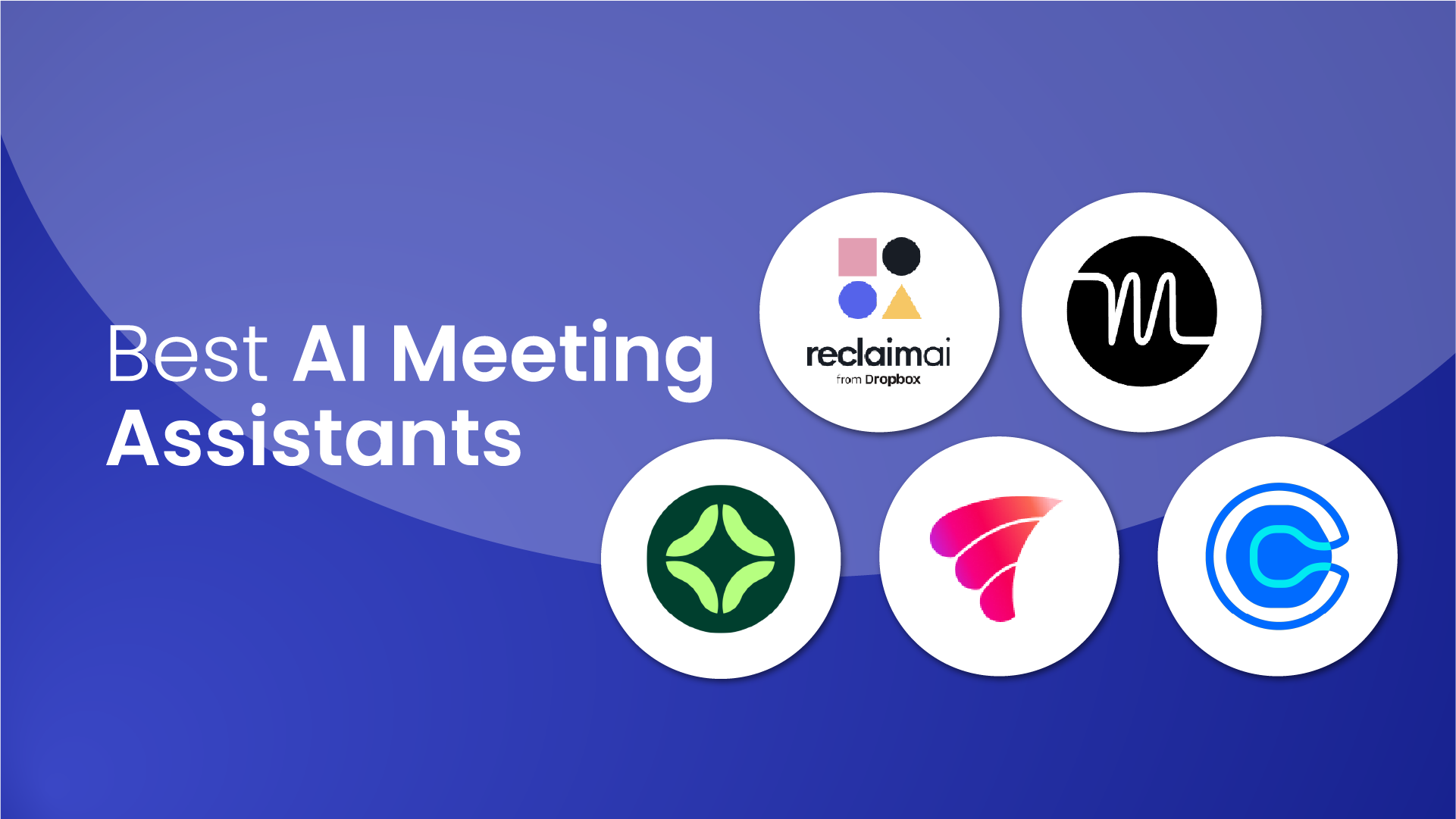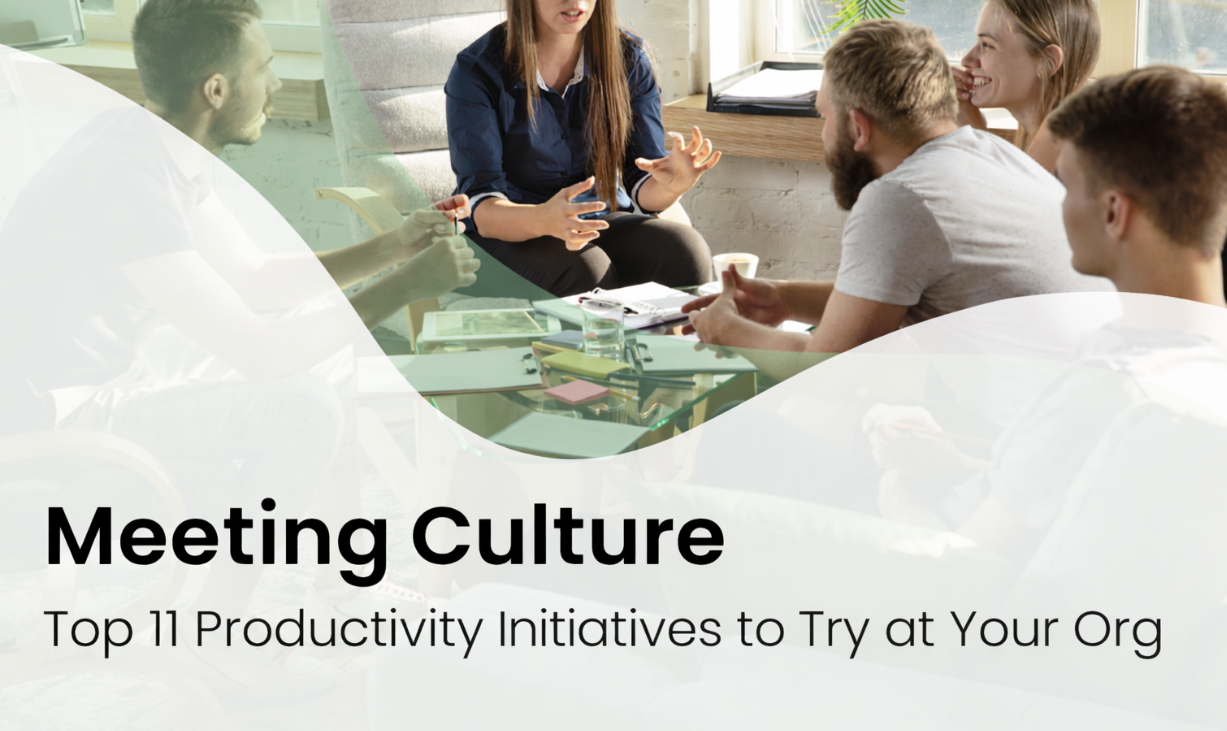Company culture is all the rage – for leadership, employees, and job-seekers alike. Positions like Chief Culture Officer, Head of Culture, and People & Culture Manager have become staples within the modern corporate workplace.
Organizations are putting more emphasis on their culture than ever before, but what exactly is company culture? The answer is not as straightforward as it may seem, as company culture is a multifaceted, evolving experience that touches every aspect of an organization's DNA. It shapes the way employees interact, the values they hold, and the direction in which a company steers itself.
Leaders and employees alike need to resonate with their company culture, as it can make or break an organization's ability to attract top talent, foster innovation, and ultimately thrive in today's competitive business environment.
In this article, you’ll learn everything you need to know about developing an amazing company culture for your workplace.
Content overview:
- What is company culture?
- Why company culture is so important
- What is a toxic company culture?
- 8 types of company culture
- 12 steps to improve company culture
What is company culture?
You might have heard the term "company culture" being thrown around a lot lately, but let’s clarify right off the bat – this isn’t just a trendy buzzword.
Company culture is the shared values, beliefs, behaviors, and rituals at a company. You can think of it as the collective personality that defines the company's identity and overall conduct.
A company's culture isn't something etched in stone or confined to a policy manual; it's often a living, evolving force that shapes the day-to-day experiences of employees. Here’s what company culture represents for an organization:
- How employees are treated
- What goals the company is working towards
- How everyone collaborates as a team
- How work gets done
- How leaders run the organization
Ultimately, a truly strong company culture means that the company's values and vision are in sync with daily practices in the workplace. And when a company has a great culture, it makes all the difference to its employees. They feel energized, committed, and happy to come to work every day.
Why company culture is so important
56% of employees value good company culture over a higher salary, and 47% of employees cite company culture as the driving reason to look for a new job. While money is important, happiness is what gets employees to stay. And with the massive workforce shift over the past few years, organizations are looking to make strategic changes to improve their company culture so they can both attract and retain their talent.
When the company's mission and culture align with positive values, employees are more likely to feel motivated, engaged, a shared sense of purpose, and content in their roles. It’s no surprise that 77% of job seekers consider the company culture before applying for a job.
Good example of company culture:
- Pixar has a culture that champions free expression and teamwork – aiming to foster innovation and creativity. The company was able to pull this off by establishing the psychological safety of its teams. In other words, they made it safe (and highly encouraged) for new ideas to be brought to the table. And, most importantly, people at Pixar aren't punished for brainstorming bad ideas — the assumption being; to find the very best ideas, you must produce lots of (potentially bad) ideas first. Their company culture has resulted in both blockbuster successes (over $15 billion at the global box office) and a loyal workforce.
Toxic example of company culture:
- Enron, one of the most notable historical examples, had a culture marred by deception and greed. The leadership at the company often abused their power, treated employees inconsistently and unfairly, and (most importantly) did not operate with integrity regarding the public interest. This ultimately precipitated one of the most notorious corporate collapses in history, resulting in 20,000 employees losing their jobs.
A toxic culture is disastrous for an organization – giving rise to stress, disillusionment, high turnover rates, and a hostile environment employees dread. Let’s dive into toxic culture.
What is a toxic company culture?
Toxic company culture is a work environment dominated by negative attitudes, management styles, and practices that fuel unhealthy behaviors and conflicts across employees. This toxicity not only wreaks havoc on employee productivity, but makes it very hard for people to feel happy at their jobs, quickly leading to burnout and high turnover rates.
Unfortunately, toxic cultures are not anomalous for many workers. 64% of employees have experience working in a toxic workplace. So even if you believe your organization has a positive company culture, you still need to continuously evaluate and connect directly with employees to make sure toxic bubbles aren’t forming within your organization.
Top 7 signs of a toxic culture:
- Lack of trust: Trust erodes, and employees question the motives and actions of leaders and colleagues, creating an atmosphere of paranoia and fear.
- Poor communication: With a lack of trust, communication inevitably breaks down, often due to secrecy, inconsistent messaging, or a lack of organizational transparency where rumors and misinformation spread like wildfire.
- High turnover: Employees quit to free themselves from the negativity, stress, and frustration, leading to an unstable workforce, decreased morale, and increased recruitment and training costs.
- Burnout: The relentless pressure to meet unrealistic expectations, or work excessive hours, leads to burnout and declining mental and physical health.
- Lack of recognition: With only negative or even hostile feedback, employees feel undervalued and unappreciated. The lack of recognition for their hard work stifles motivation, enthusiasm, and productivity. And, no, branded company merch like embroidered shirts doesn't quite count.
- Hostility & bullying: A toxic culture often fosters hostile relationships and workplace bullying. Cliques, blatant favoritism, and workplace conflict thrive, leading to an extremely unhealthy work environment.
- Stagnation: Innovation and creativity are stifled, as employees fear taking risks, sharing new ideas, sticking their necks out, or having credit stolen by someone else.
The effects of a toxic culture are far-reaching and damaging. Employee morale plummets, leading to disengagement and decreased productivity. The organization may suffer from higher absenteeism and increased healthcare costs as stress-related illnesses become prevalent. Employee loyalty craters, and talented individuals readily depart in search of healthier environments, resulting in a loss of institutional knowledge that is difficult, sometimes impossible, to replace.
Toxic culture can also tarnish an organization's reputation, affecting its ability to attract top talent and retain valuable clients or customers. After leaving a toxic workplace, employees are also not afraid to warn their networks of future job seekers on review sites of the negative experience at that company.
8 types of company culture
Every organization will have its own unique culture. After all, no company is the same. Still, there are several archetypes many of them fall under:
1. Clan culture
Clan cultures are tight-knit, resembling an extended family, where things like teamwork, collaboration, and shared values are emphasized. In a clan culture, employees often form close bonds, and a great priority is placed on nurturing and mentoring. The leadership style is often more supportive than authoritative, and employees tend to feel a sense of belonging.
2. Adhocracy culture
An adhocracy culture promotes decentralized leadership, encourages employee autonomy, and values organic decision-making. As the name "ad hoc" suggests, it's defined by its flexibility and adaptability in stark contrast to more rigid bureaucratic cultures. This type of culture is often found in startups or rapidly growing companies, which need to change, adapt, or build out processes on the fly – on an "ad hoc" basis.
3. Market culture
Market cultures operate like a competitive marketplace. Employees are often highly goal-oriented and motivated by competition, exceeding KPIs, and 'winning' within the market as much as possible. This culture is often seen in sales-driven organizations.
4. Hierarchy culture
Hierarchy cultures are characterized by well-defined structures and clear lines of authority. Rules, procedures, and formal processes govern operations, and employees often seek stability and a structured work environment. This culture is especially prevalent in larger, more established organizations.
5. Purpose-driven culture
Purpose-driven cultures are defined heavily by the organization's stated purpose, and this purpose is often one of the primary reasons employees work there. The company's core values and corporate mission play a massive role in guiding everything within the organization, from the ideals they follow, to how decisions are made, how the company operates, and how employees treat one another. Often focused around an admirable cause, purpose-driven cultures are among the most engaging for employees.
6. Customer-focused culture
Customer-focused cultures are also aligned toward a singular priority, but, as the name suggests, the customer is the central focus. Everything from the company's core values, business strategies, procedures, operations, and more is based on maximizing value for the company's customers. Amazon, for example, has a self-identified customer-focused company culture, with "customer obsession" living at the top of the company's "Leadership Principles." To build on this customer-centric approach, businesses often use referral promotion strategies to encourage satisfied customers to spread the word and bring in new clients.
7. Caring culture
In a caring culture, a company focuses on employee happiness, trust, growth, and loyalty. Most companies, in one way or another, express their care for their workforce. But caring cultures put their money where their mouth is and offer amazing employee well-being support like paid time off, generous benefits, and work-life balance perks. Think of CEOs who take pay cuts to avoid corporate layoffs — this is the type of thing you see in caring cultures.
8. Safety culture
Safety cultures are primarily defined by their aversion to risk, focused on avoiding, mitigating, or alleviating these dangers. Strategic planning and careful decision-making are highly emphasized, and companies often have many protocols or procedures in place to protect employees, business assets, the company itself, and their customers. It's also common for these cultures to have contingency plans in place to proactively address problems they believe can arise.
12 steps to improve company culture
What defines a great company culture? Let's dive into the 12 key elements that contribute to shaping a culture that propels companies to excellence:

1. Clear core values
First and foremost, a great culture starts with well-defined core values. What matters to your company? Why should your employees care? What is the organization working towards? These company values serve as the ethical compass that should guide every decision and action within the organization. They’re not merely words to paint on a wall, but deeply ingrained principles reflected in your daily operations.
From the way employees interact to how the company conducts business, your company's core values shape the culture and identity of your organization. By sticking to these principles, a company can build a positive reputation, earn the trust of its stakeholders, and create a cohesive team that shares a sense of purpose.
2. Open & inclusive workplace
Inclusivity is about equally valuing and respecting the different kinds of employees within your company – and an organization's culture can't be considered healthy if some people feel like they don’t belong. By embracing diversity, inclusion, and open communication, you can encourage creativity and adaptability within your workforce. In a healthy culture, every voice is heard and respected, regardless of an individual's position, race, gender, age, sexual orientation, disability, or background.
3. Strong leadership
A great leader not only talks about values, but exemplifies and sets the tone for the entire organization. When a leader embodies the values they preach, it inspires their employees to do the same.
The importance of great leadership cannot be understated – especially when you look at the effects of bad leadership. 57% of employees have left a job because of their boss, with another 32% reporting they have thought about leaving because of poor leadership. And most organizations lose 5-10% in productivity drag that could be eliminated with better leadership practices.
Great leaders inspire ambitious actions. Think of Steve Jobs, who after being painfully ousted from the company he helped start, returned and saved the company from the brink of collapse. Apple Computer has since become the most valuable company on the planet, largely due to his tenure during that period.
4. Employee engagement
Employees are what drives a business forward – and need to be the top priority for your organizational culture. Companies that prioritize employee engagement recognize the importance of valuing, motivating, and fostering purpose within their employees. When workers feel engaged, they are more likely to be committed to their jobs and contribute to the company's success. Engaged employees also tend to be more productive, have better morale, and are less likely to leave the company – resulting in lower turnover rates.
But unfortunately, 65% of employees report they are not engaged in their work, which means that they don't hate their jobs, but they certainly don't love them either. Low employee engagement increases the chances of quitting, and it also hampers productivity and the quality of their work. Yet, strong leadership is one of the best ways to improve employee engagement and inspire total employee motivation.
5. Meeting culture
Are meetings helping or hurting your organization? Likely somewhere in-between, but left unchecked, meetings can be disastrous on employees' mental health and productivity. The average full-time employee has to attend 25.6 meetings/week, which leaves them only enough time to get through 53.5% of their planned tasks every week. Outside of this massive time waste during the workweek, employees are also averaging 7.6 hours/week of overtime to try to keep up.
Despite all this time spent in meetings, 71% of senior managers believe that most are actually unproductive, and 32% of employees attend meetings they think could have been handled through an email instead. Which leads to an average 48.2% of employees burning out from too many meetings.
6. Communication & notification guidelines
If you want to create a positive and empowering workplace culture, it all starts with good communication. Communication is the cornerstone of all healthy relationships, whether they're personal or professional. A lack of good communication leads to misunderstandings, unmet expectations, low collaboration, missed opportunities, and even outright conflict.
If you’re a fan of The Office, remember the episode when Jim's new boss, Charles, gave him vague instructions to provide a "rundown" of his clients. Jim accepted without any clarification, and then spent the rest of the episode trying to figure out what a rundown even meant. These are the inefficient, frustrating, and all-too-common situations you can avoid with healthy communication (many viewers call this moment one of the show's most relatable episodes).
But communication has to be respectful of the other person's time too. The average employee is interrupted 31.6 times/day, and this is causing massive notification fatigue across teams. So unless it’s something super urgent, use an asynchronous channel like Slack or email. The #2 cause of burnout is notification fatigue – with 59.9% of employees stressing over these distractions, it’s time to start protecting employees from these constant interruptions.
7. Recognition & appreciation
Your employees spend almost a quarter of their lives with you – they put in long workdays, strive for advantageous deadlines, and go the extra mile for the company all the time. 79% of employees quit their jobs because of a lack of recognition and appreciation. So, the simple act of acknowledging the amazing work they do is by far the easiest way to improve your organizational culture. Recognizing employee accomplishments, both big and small, can completely turn around a person's day.
8. Work-life balance
Nobody wants to work at a company that doesn’t respect their personal time, or works them to the bone. It's super important to create an atmosphere that promotes a healthy work-life balance and gives employees the freedom they need to juggle their work and personal lives. When employees can strike a healthy balance, they're more likely to feel happy and fulfilled on the job. This is especially true considering 60.2% of employees report feeling burned out.
9. Innovation & adaptability
Great cultures are nimble and adaptable. They encourage innovation and are not afraid to take calculated risks, empowering employees to share ideas that can drive the organization forward. The strongest company cultures will frequently involve employees in shaping and improving the future of the organization.
By creating an environment where employees feel confident taking risks, sharing ideas, and voicing concerns without fearing reprisal, you can establish psychological safety within your work environment. Different backgrounds, experiences, and viewpoints can lead to more creative solutions and ideas.
10. Transparency & credibility
Open and honest communication is a hallmark of a great company culture. Transparency builds trust and credibility, allowing employees to understand the company's direction, challenges, and successes – and believe in them too. If your organization lacks transparency, then your other culture efforts may ultimately be in vain. No amount of pizza parties or ‘Employee of the Month’ awards will undue the suspicion and resentment wrought by secrecy and dishonesty.
People want to work for an organization they can trust — but it’s almost unbelievable how many are not that fortunate. 87% of employees want their next job to be more transparent. And employees aren't the only ones – 94% of consumers prefer brands that are transparent and honest. So building a transparent credible workplace culture won’t just improve employee happiness, but your revenue numbers too.
11. Social responsibility
Social responsibility is important for modern job seekers. Companies that give back to their communities and demonstrate ethical behavior in the broader world earn respect and loyalty from both employees and customers. Employees want to be a part of something they really believe in. Simply making more profit every quarter isn't a very inspiring endeavor if your workforce doesn’t feel like they’re a part of a strong company culture focused on something good.
12. Measure, iterate, & improve
Finally, improving company culture isn't a one-time job. It's amazing that you're here reading this article, actively working on ways to improve your company culture. You are doing a great job by starting, but maintaining your ideal company culture is the hardest part. Bad routines inevitably slip in again, people get busy, and employee wellbeing can all too easily be forgotten or deprioritized after a while.
You need to make a conscious and structured effort to maintain and continuously improve, not just for your part, but also on the training and guidance across the entire company.
Healthier company culture for a healthier, happier workforce 🌿
The success of a company depends on its culture. A positive and supportive company culture drives employee productivity and encourages them to contribute more to the company's mission. HR leaders must prioritize and invest in creating an environment where employees feel valued, supported, and engaged – creating a work culture that values its employees will allow you to attract and retain your best talent, innovate, and achieve success as an organization.
Did we miss anything? What is the company culture like at your organization? Tweet us @reclaimai to let us know!



































